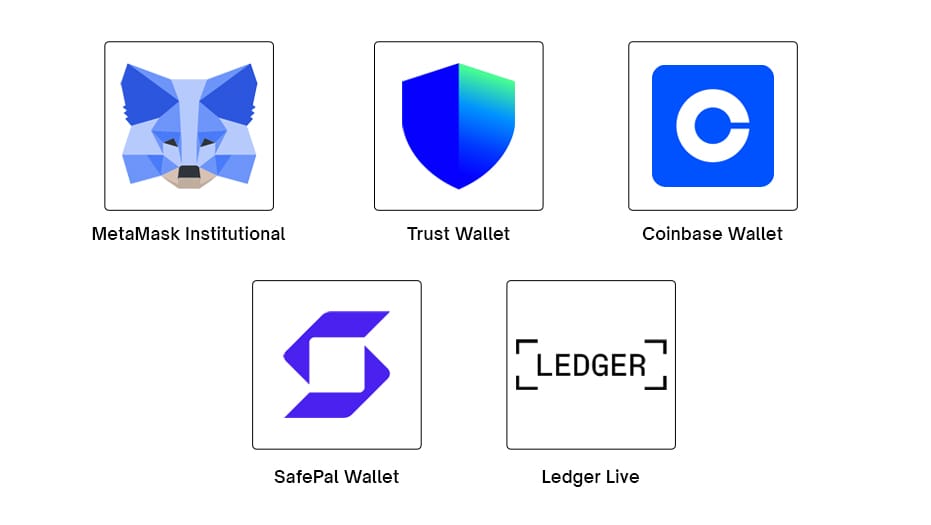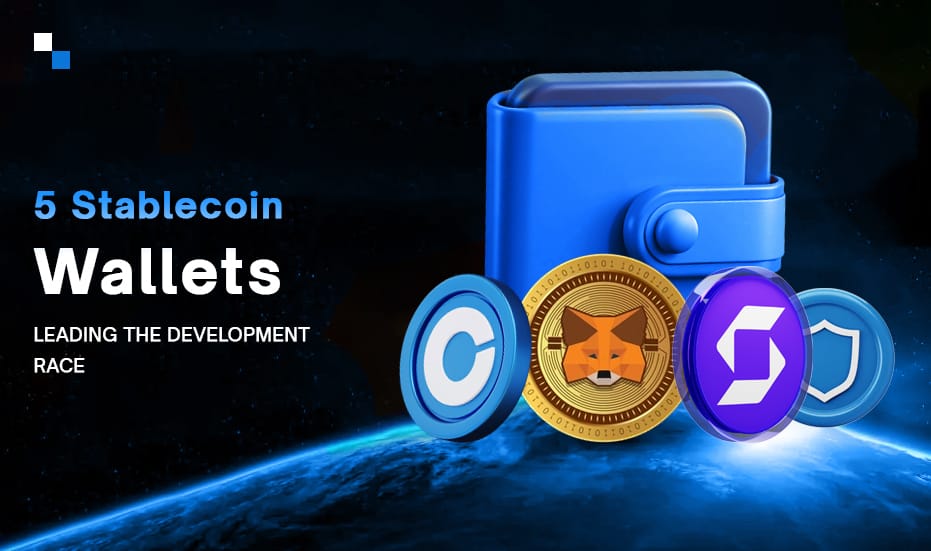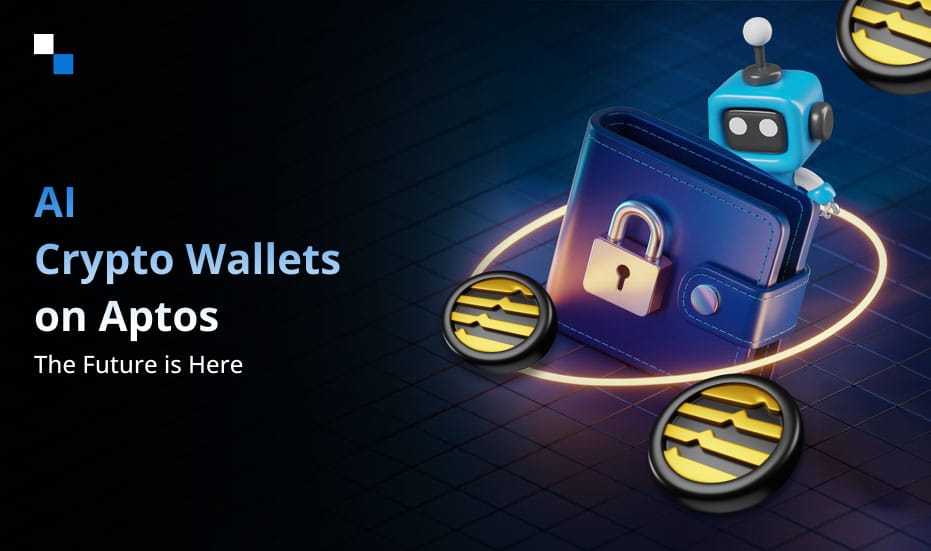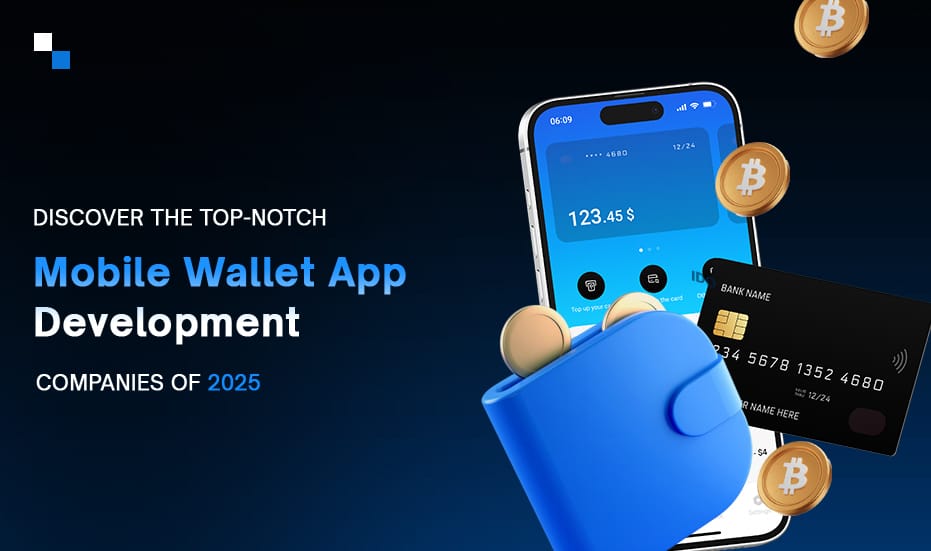
Why Prediction Platforms Are the Next Big Thing for Crypto Exchanges?
April 9, 2025
Artificial Intelligence in Asset Tokenization for Smart Real Estate Platform Development
April 9, 2025Let’s be real—crypto wallets used to be simple vaults. Now? They’re full-blown fintech engines. Stablecoin wallets, in particular, are stealing the spotlight. Why? Because users don’t just want to hold tokens—they want real utility without volatility. But here’s the catch: building a wallet today isn’t about slapping together a pretty interface and calling it a day. It’s about syncing with evolving protocols, handling compliance on autopilot, and delivering transactions that feel instant, even when they’re hopping across chains.
In this blog, we’re diving deep into what makes a stablecoin wallet work in today’s landscape. Not just the fluff— features, architecture, and real examples that show where this ecosystem is headed. Ready to see how the top wallets are redefining the space—and what it takes to build one that stands out?
Let’s explore!
The Current State Of Stablecoin Crypto Wallet Development
Stablecoin crypto wallet development is undergoing a transformative phase, fueled by rising adoption, progressive regulation, and rapid technological evolution.
- Adoption Acceleration : The number of active stablecoin wallets has surged by 53%, leaping from 19.6 million in February 2024 to more than 30 million by February 2025. This jump showcases stablecoins’ growing role as a reliable financial tool, seamlessly connecting traditional finance to decentralized systems.
- Regulatory Momentum : In the U.S., policymakers are accelerating efforts to bring stablecoins under formal oversight. The STABLE Act, recently advanced by the House Financial Services Committee, is a clear move toward building a structured legal environment, increasing trust and institutional adoption.
- Expanding Market and Tech Integration : The total stablecoin market cap now exceeds $225 billion, and forecasts suggest it could cross $400 billion by the end of 2025. This growth is being driven by stablecoins becoming the go-to option for global payments, cross-border transfers, and digital savings.
Simultaneously, tech integrations—like the pairing of stablecoins with Bitcoin’s Lightning Network—are improving transaction efficiency, speed, and affordability across crypto wallet development platforms.
- Enterprise-Grade Growth : It’s clear that stablecoins are entering the mainstream with strong business fundamentals, with USDC issuer Circle filing for IPO and reporting $1.66 billion in revenue.
Stablecoin crypto wallet development is now a strategic priority for Web3 companies aiming to lead in the next generation of digital finance. But success in this space isn’t just about launching a wallet—it’s about launching the right wallet. In a highly competitive landscape, the features you integrate can make or break user adoption, security, and scalability.
Key Features Every Stablecoin Wallet Should Offer
If you’re building in crypto, the wallet is your front line. And when it comes to stablecoin crypto wallet development, it’s all about delivering unmatched usability, airtight security, and future-proof features.
- Multi-Stablecoin Support : Seamless storage and management of USDT, USDC, BUSD, TUSD, and FDUSD across Ethereum, Tron, and BNB Chain.
- Fiat On/Off Ramps : Integrated KYC-compliant gateways for direct fiat-to-stablecoin conversion and vice versa, enabling frictionless onboarding.
- Multi-Sig & MPC Security : Advanced key architecture using Multi-Party Computation (MPC) or multi-signature protocols ensures non-custodial, tamper-resistant storage.
- Gasless Transactions : Meta-transactions or fee relayers to abstract gas fees, enhancing user experience, especially for non-crypto natives.
- Real-Time Stablecoin Valuation : Live FX rates, price tracking, and in-wallet analytics for portfolio visibility and volatility insights.
- DeFi & Staking Integrations: In-app access to staking pools, lending platforms, and DEXs for USDT, USDC, and more.
- Regulatory-Ready Framework : Built-in AML/KYC modules, whitelisting, and transaction auditing tailored for institutional compliance.
- Biometric & Hardware Wallet Compatibility : Touch/Face ID support and Ledger/Trezor integration for enhanced access control.
High-performance stablecoin crypto wallet development merges innovation with compliance, essential for next-gen wallet development projects. In an increasingly competitive space, only a few wallets deliver enterprise-grade performance, user control, and cross-chain interoperability. Here’s a closer look at the leading 5 stablecoin wallets for 2025 that are capturing market attention.
Top 5 Stablecoin Wallets for 2025

1. MetaMask Institutional
Best for : Enterprises & Institutional Funds
MetaMask’s evolution into the institutional segment allows hedge funds, DAOs, and enterprises to manage stablecoins with control and compliance. It supports Ethereum-based USDC, USDT, and other ERC-20 stablecoins while integrating advanced policy frameworks and transaction simulations.
Key Features :
- Enterprise-grade multi-user access
- Advanced compliance integrations
- Layer-2 and EVM chain support
2. Trust Wallet
Best for : Multichain Retail & DeFi Users
A versatile and user-friendly wallet, Trust Wallet supports major stablecoins on Ethereum, BNB Chain, Tron, and Solana. It brings cross-chain swaps, real-time price feeds, and an in-built DApp browser—perfect for users moving stablecoins across ecosystems.
Key Features :
- Self-custody with sleek UI
- 70+ blockchain integrations
- Staking and token swaps
Trust Wallet’s architecture aligns with modern crypto wallet development goals, emphasizing interoperability, ease of use, and security without centralized dependencies.
3. Coinbase Wallet
Best for : Regulated Markets & Fiat On-Ramps
Backed by a publicly traded company, Coinbase Wallet offers safe, seamless stablecoin storage with direct links to its exchange. It enables access to DeFi protocols while keeping users within a trusted, regulated environment—ideal for new movers and enterprise clients.
Key Features :
- Deep integration with Coinbase Exchange
- Supports Base, Optimism, Ethereum, and more
- Hardware wallet compatibility
Its growing influence in white label crypto wallet solutions also positions it as a model for fintechs building custom digital wallets.
4. SafePal Wallet
Best for : Cold Storage + Mobile Flexibility
Combining a mobile app with a hardware wallet, SafePal is tailored for those who prioritize offline protection and on-the-go usability. Supporting all stablecoins, it’s a Binance-backed ecosystem with strong DeFi access and security protocols.
Key Features :
- Supports 100+ chains
- NFT & token management
- DApp and swap integration

5. Ledger Live
Best for : Institutional & Long-term Holders
Ledger Live, paired with Ledger hardware devices, is ideal for secure long-term stablecoin storage. It supports USDC, USDT, and others through various apps, offering secure DeFi access and token swaps.
Key Features :
- Cold wallet security
- Ecosystem of DeFi apps
- Ledger Recover & backup services
The rise of stablecoins is shifting focus from generic crypto wallets to stablecoin-optimized wallet architecture. Whether you are building a scalable wallet solution or entering the DeFi space, these tools set the gold standard.
To meet this growing demand, many enterprises are now exploring white label crypto wallet solutions that replicate the power of these market leaders while offering brand control.
How Stablecoin Crypto Wallet Development Works: A Developer’s Perspective
From a developer’s standpoint, stablecoin crypto wallet development requires precise architecture, cross-chain compatibility, and robust compliance layers. Here’s how the process unfolds:
- Requirement Analysis & Architecture Design : Define supported stablecoins (USDT, USDC, BUSD, etc.), networks (Ethereum, Tron, BSC), and use-case-specific features like on-ramp/off-ramp, staking, or gasless transfers.
- Multi-Network Integration : Integrate with multiple blockchain APIs and SDKs (e.g., Web3.js, Ethers.js) to enable transactions, balance tracking, and gas fee abstraction across chains.
- Stablecoin Token Handling : Implement ERC-20/TRC-20 token standards and ensure precision handling (e.g., 6 or 18 decimals), especially for real-time conversions and FX rates.
- Security Protocols : Incorporate MPC, multi-sig, or hardware wallet compatibility, along with encrypted local storage and secure key management via vaults or SDKs like Fireblocks or BitGo.
- Compliance Engine : Add AML/KYC, blacklisting, and audit logs via compliance APIs to ensure lawful crypto wallet development.
- UI/UX Layering : Design intuitive interfaces for portfolio viewing, stablecoin swaps, yield tracking, and fiat integrations.
- QA, Stress Testing & Deployment : Conduct stress testing under high-load scenarios, perform penetration testing, and deploy across mobile, web, and hardware environments.
Modern businesses increasingly prefer white label crypto wallet solutions to fast-track this build process while maintaining branding control. These ready-to-deploy frameworks reduce time-to-market and offer scalability, regulatory readiness, and seamless multi-stablecoin integrations right out of the box. However, unlocking the full potential of such solutions depends heavily on the development partner you choose.
How To Choose a Top Stablecoin Crypto Wallet Development Company?
Choosing the top stablecoin crypto wallet development company can make or break your wallet’s success. The ideal company brings a balance of technical expertise, compliance readiness, and user-focused design.
- Proven stablecoin wallet expertise (USDT, USDC, etc.)
- Strong security (MPC, multi-sig, biometrics)
- Regulatory compliance (KYC/AML integration)
- Full white label customization
- Cross-chain & fiat support
- Solid client reviews & case studies.
Partner with a crypto wallet development company that aligns with your vision and delivers on innovation, speed, and trust.
The Stablecoin Wallet Race Is On — Win It with Antier
The stablecoin space is heating up — and if you’re not building, you’re already behind. At Antier, we make it easy to launch feature-rich wallets through expert stablecoin crypto wallet development. Whether you need multi-stablecoin support, high-end security, or clean UI across chains, we’ve got you covered. Prefer a faster launch? Our white label crypto wallet solutions help you hit the ground running with full customization.
This market’s moving fast. Let’s build something that puts you ahead of the curve — with Antier.



